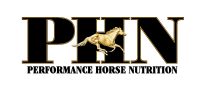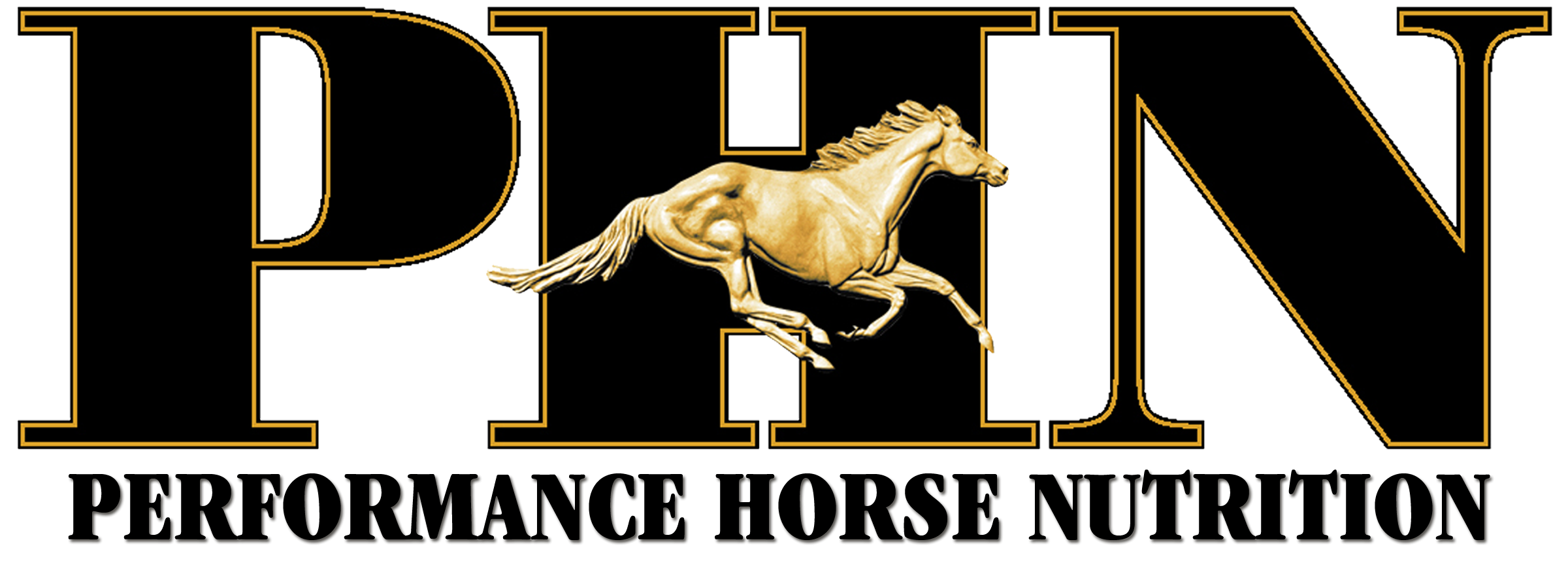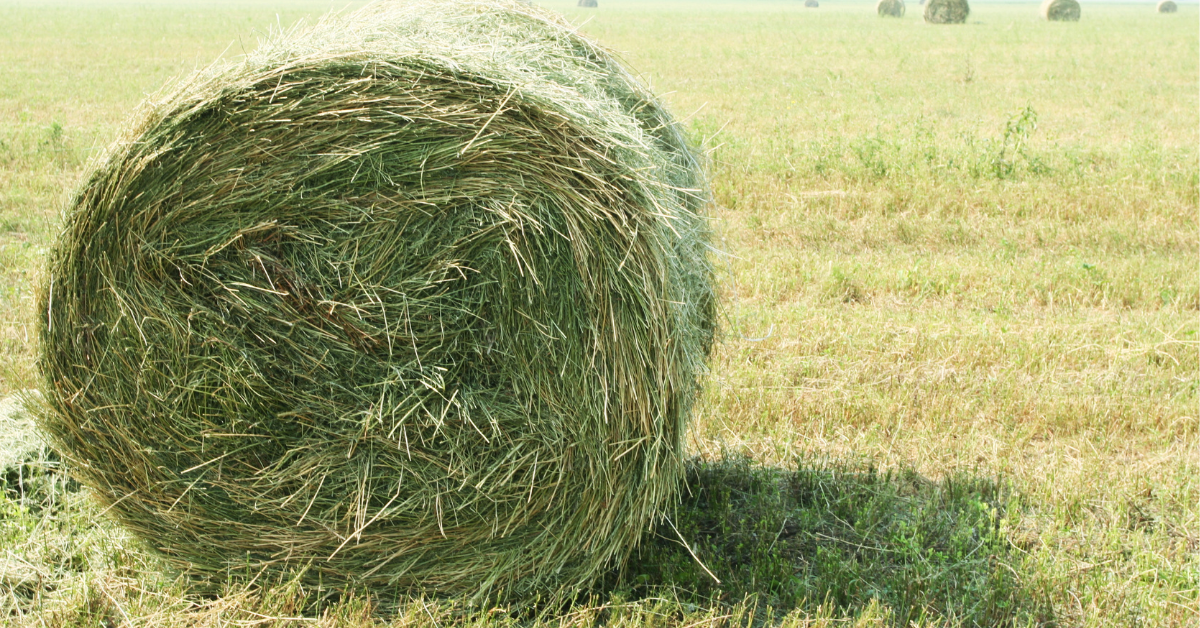MATCHING THE RIGHT FORAGE WITH YOUR HORSE’S NUTRIENT NEEDS
HAY 101
2021

Written by Performance Horse Nutrition
Forage (Fibre) from pasture and/or hay is the predominant ingredient in the diet for most horses. The digestive system of a horse requires forage to function properly. Horses that have access to abundant pasture will satisfy their need for forage by grazing. Horses kept in stables, horses kept in grass free paddocks, and most horses during the winter months depend on their caregivers to provide the proper amount and type of forage. Given the importance of hay in horse diets, this is a refresher course in hay – we’ll call it “Hay 101”.
What is hay?
Hay is plant material that has been grown, cut down, dried, packaged into bales, and stored for feeding at a later time. Just about any type of plant can be made into hay. To have a good quality horse hay you must start with nutritious plants, harvest those plants at the proper stage of maturity to maximize nutrient content, and dry the plants properly so they don’t spoil (mold).
In general, horse hay falls into two broad categories – legume and grass. Legume Hay is generally higher in protein, energy, and minerals than grasses harvested at the same maturity. Examples of legume hays include alfalfa and clover. Grass hays include timothy, orchard grass, bluegrass, brome grass, rye grass, fescue, and Bermuda grass. Other plants with a similar nutrient profile to grass hay are cereal grain hays. Cereal grain plants such as oats, barley and wheat generally make good hay when harvested during their early growth stages before seed heads become predominant. Most any legume, grass or grain hay can be fed to horses if it is high quality.
Selecting a Hay
With so many types of hay available, how do you choose one appropriate for your horse? The goal is to match the nutrients provided by the hay with the nutrient requirements of the individual horse. For example, the nutrient requirements of a pregnant mare are higher than the requirement of a mature gelding. Table 1 lists several classes of horses and recommendations for hay type selection. Note: quality of hay, of any type, can be fed to any class of horse. If hay with a low or moderate nutrient content is fed to a horse with high nutrient requirements, the nutrients lacking in the hay must be supplied in the grain concentrate portion of the diet. Likewise, if hay with a high nutrient content is fed to horses with low or moderate nutrient requirements, less grain is needed to balance the diet. More important than the type of hay fed, is the amount of good quality hay fed. Feed at least (minimum) 1 lb. of hay per 100 lbs. of body weight per day.
Table 1 – Suggested Hay Types for Different Classes of Horses
TYPE OF HORSE | ALFALFA / LEGUME HAY | MIXED HAY | GRASS HAY |
Mature Horse |
| X | X |
Maintenance |
| X | X |
Stallion (Non-Breeding) |
| X | X |
Stallion (Breeding) | X | X | X |
Mare (Barren) |
| X | X |
Mare (Pregnant) | X | X | X |
Mare (Lactating) | X | X | X |
Growing Horse Mod., Rapid Growth | X | X | X |
Growing Horse Slow, Mod Growth |
| X | X |
Exercise Light |
| X | X |
Exercise Mod. Intense |
| X | X |
Determining Hay Quality
Horses require good quality hay as their digestive tract is “one-way” in direction. Horses normally are not capable of vomiting, and they become sick if it’s moldy or dusty hay. Hay quality can be determined in many ways. Stage maturity, leafiness, color, foreign material, odor and condition are physical parameters that can be judged to determine quality. Physical quality can be determined by observation and comparison of hay samples. Table 2 indicates what to look for in judging these physical parameters. It must be noted that lower nutritive value hay can be fed, but it will require increased grain supplementation. Moldy or very dusty hay should not be fed at all.
Table 2 – Physical Characteristic of High-Quality Hay
STAGE OF MATURITY | Early cut hay is more palatable and digestible. Look for short plants with few or no seed heads |
Leafiness | High quality hays have a high percentage of leaves (blades) to stems. Look for abundant leaves or blades, small thin stems. |
Color | Bright green color indicates proper curing, high vitamin content and good palatability. Loss of color indicates weather damage. Look for bright green color. |
Foreign Material | Hay should not contain weeds or foreign material such as dirt, wire, and sticks. Look for grass or Alfalfa plants with no weeds. |
Odor/Condition/Mold | Odors such as musty or rotten odors indicate low quality hay that was not properly cured and stored. Look for: clean, fresh smelling hay free of visible |
Health Concerns Related to Different Hays
Finally, there are a few health concerns that merit attention when choosing horse hay. High moisture hay (haylage or baleage) may be fed to horses, but many have increased risk of molds or toxins such as botulism. Some hays are susceptible to fungal infections, including rye (may be infected with ergot) or fescue (which may be infected with endophyte fungus). Sorghum/Sudan grass hybrids may result in health disorders and ought to be avoided. Red clover harvested in warm humid weather may become infected with a fungus that causes “slobbering”. Alfalfa may contain blister beetles, primarily if sourced from the central US, and should be examined with the aim of ascertaining any infestation. In general these problems are not common, but awareness of the possibilities will help when making informed decisions about hay selection.
Does Hay Lose its Nutritional Value While in Storage?
Hay begins to lose its nutritional value at the time of cutting and continues to lose nutrients both while drying in the field and while in storage. The nutrients most affected by harvesting and storing are vitamins. Conversely, the protein and mineral content of hay is quite stable. All green parts of growing plants are rich in carotene and, therefore, have a high vitamin A value. In fact, the degree of greenness is a reliable index of vitamin content. Approximately 50% of the Vitamin A in hay may be lost during the first 24 hours of the curing process. If the hay is subjected rain or weather damage, vitamin losses are greater. Vitamin depletion continues during storage, with the rate of destruction determined by temperature, exposure to air and sunlight, and length of storage. When hay is stored under average conditions, vitamin content can be expected to decrease by approximately 7% per month. If the hay is left outside, without cover, the vitamin losses will be more substantial. Again, the color of the hay is best, non-laboratory means of determining vitamin content. Remember, the greener the hay, the higher the vitamin level.
When Buying Horse Hay, What Nutrient Ranges are Acceptable?
The only reliable method to determine nutrient content of hay is laboratory analysis. When interpreting results, the following guide will provide acceptable nutrient ranges. Remember, along with chemical quality, hay should also be of good physical quality.
Table 3 – Hay Buying Guide based on Acceptable Ranges in Chemical Quality for Three Different Hay Types Dry Matter (DM) Basis Nutrient
NUTRIENT | LEGUME HAY | MIXED HAY | GRASS HAY |
Dry Matter % | 90-95 | 90-95 | 90-95 |
Crude Protein % | > 16 | 12-16 | 8-14 |
ADF % | < 34 | < 40 | < 40 |
NDF % | > 35 | > 40 | > 55 |
Calcium % | 1.2-1.8 | 0.6-1.2 | 0.25-0.65 |
Phosphorus % | 0.15-0.35 | 0.2-0.4 | 0.15-0.35 |
Copper, ppm | 6-15 | 6-15 | 6-15 |
Zinc, ppm | 15-40 | 15-40 | 15-40 |

